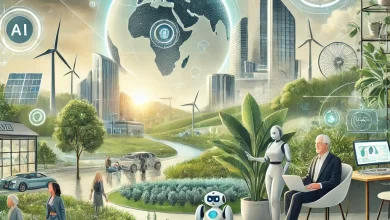
What a difference a year makes. Twelve months ago, the public tentatively first tasted generative AI with the release of ChatGPT, and many users were instantly blown away by its immediate capabilities and never-before-seen speed of content production. Fast forward to today, and even the internal wranglings of AI company leadership positions make headline news—while rumors swirl of an unprecedented technology breakthrough that will mark a milestone in humanity’s quest to create ‘artificial general intelligence’, an AI system that is as smart or even smarter than humans. According to new research by CI&T in collaboration with the Global CxO Institute, three-quarters of businesses (76%) are already using generative AI or expect to do so in the next 12-18 months. Almost one in ten (8%) describe widescale use across their organisation.
Behind the scenes, experts at technology companies like CI&T have been working on and anticipating AI’s development for many years. After all, we believe it’s the most exciting disruption in the history of computing. However, Gartner has also ranked generative AI as reaching the ‘peak of inflated expectations’ in its latest Hype Cycle. Turning this ‘hype’ into ‘hyper-digital’, rather than letting AI flounder under the weight of sky-high anticipation, is a challenge that technology businesses must grapple with throughout 2024 and beyond.
The three-act future of the human-business-AI relationship
Generative AI like ChatGPT is only a small part of a bigger revolution in AI. In the coming years, the story of technology’s impact on the corporate world and society will likely take place over the course of three acts. Act One is ‘Hyper Productivity’: an acceleration of business productivity and efficiency, possible now with today’s AI technology. We’re already seeing increased collaboration between humans and AI that has transformed the speed and quality of people’s everyday work, for instance.
Act Two is ‘Hyper Personalisation’: the creation of tailored products, services, and enhanced customer experiences, redesigned around natural language. Today’s ‘screen monopoly’, in which we mostly interact with technology by tapping or clicking on a screen, will end, sparking more human interfaces and natural interactions with machines such as voice-powered conversational communication. We’ll also see a war between businesses to create the best AI-powered features, resulting in remarkable innovations and even greater customer service. We estimate this stage to be around only two to three years away.
Act Three is the advent of ‘Disruptive Business Models’: innovative new types of organisations, products, and services will emerge, powered by AI’s scalable complex decision-making. By the end of the decade, both existing industry leaders and trailblazing start-ups will take advantage of AI tech to create fresh business models, in the same way, new technologies such as the World Wide Web and smartphones spawned the creation of now iconic companies like Netflix and Uber. So, how can business leaders prepare for these three acts?
How to harness AI at the enterprise level
AI has the potential to transform your business’s workflows shortly. For instance, it can spark unparalleled productivity and efficiency throughout the creation lifecycle of a new product or service. By using AI to automate specific tasks and processes, you can save valuable time and resources and empower your employees to focus on more creative, strategic, and fulfilling tasks.
AI can also usher in unique and personalised experiences for customers, propelling loyalty and growth opportunities. Industries set to be most impacted by AI’s revolution include those that are customer-facing and technology-driven. Here, the technology looks likely to transform the fundamental nature of numerous types of businesses. For instance, why browse an e-commerce website or search the web for a product when you can tell an AI application to find you exactly what you want?
To best prepare for the AI revolution and stay ahead of competitors, you must be ready to experiment with the latest technology to unlock maximum value. This requires a strong focus on change management and thoughtful planning. You’ll need to educate your employees about AI’s benefits and provide training so they can seamlessly integrate these tools into their workflows. You’ll also need a clear understanding of how the technology aligns with your organisation’s goals and values, ensuring your team is equipped to develop, deploy, and manage AI solutions to their maximum abilities.
Your next steps to ensure AI success
Alongside these technological evolutions, businesses will also need to adjust to new governance. You’ll need to protect your organisation against disruptive market forces and the potential risks of AI implementation like security and accountability. Plus, there may also be new rules arriving on the use and development of AI—with the UK’s recent AI Safety Summit bringing about a raft of new worldwide government commitments.
There needs to be a step change in how we regulate; with the seismic pace of AI innovation, we need much shorter cycles of regulation. This will be a challenge as the wheels of governments and regulatory authorities will need to gather speed. In fact, companies will likely need to self-regulate before official guardrails are put in place. Businesses need to prepare their legal team to follow regulatory advancements in AI, prepare their technical team to understand the tech’s evolution and prepare their compliance and governance team to oversee what’s happening in the company.
There’s a huge exercise to be done to adjust corporate governance, legal frameworks, and tech strategy, and specialist advice will be needed in many cases. Ultimately, your tech strategy will need to be refreshed to be ready for a new level of competition. It’s time to transition from the hype phase of AI to hyper-digital—with those who evolve first best equipped to become industry leaders in this vision of the future.



